Athlone House (Caenwood)
Hampstead Lane, Highgate, N6 4RX
Medical dates:
Medical character:
1955 - 2003
Geriatric
This neo-Elizabethan style Victorian mansion, known originally as Caen Wood Towers, was built in 1871 by Edward Brooke, MP, a businessman who had made his fortune in the chemical industry manufacturing aniline dye.
During WW1 the house became a military convalescent hospital, when it was known as the American Hospital for English Soldiers. The King and Queen visited it in April 1916.
During WW2, under the guise of being an RAF convalescence
hospital for officers, in 1942 Caen Wood Towers became the RAF
Intelligence Training School. In 1944 two near misses from V1
flying bombs caused some injuries to the staff and damage to the
buildings.
By 1945 a two-storey building had been added to the north
of the house. The conservatory was demolished and a dining room and
physiotherapy gym was built on its site.
The Ministry of Health acquired the site in 1951 and
Caen Wood Towers was converted into a convalescent home for the Middlesex Hospital. Dr John Wedgwood (a
member of the famous pottery family), a geriatric care specialist,
helped establish it as the second post-war geriatric hospital. It was renamed Athlone House in 1955.
During the early 1970s the House was extended. A single-storey
building of timber and glass was erected to the east of the main
building. This new extension contained three wards - Suffolk, Beaufort
and Caenwood - all connected to Athlone House by covered walkways. Two
modern blocks were built at the eastern part of the site for nursing
accommodation - the New Residence (a two-storey block with a flat roof)
and Lake House (three interconnecting one- and two-storey blocks). A
one-storey day hospital was built between the New Residence and the
Hampstead Lane boundary.
The property belonged to the Parkside NHS Trust, but was used by the
Kensington and Chelsea NHS Trust who decided it was too remote from
their 'borough'. The site was sold to Dwyer Investments and the
patients, who were all from northeast Westminster, were transferred to
the Princess Louise and Athlone House nursing homes in North Kensington and Paddington in 2003.
|
Present status (January 2008) |
|---|
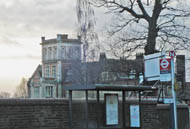
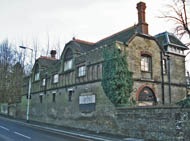
The remaining old buildings as seen from Hampstead Lane.
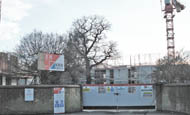
Entrance to the Kenwood Place site.
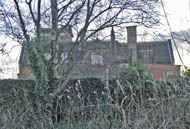
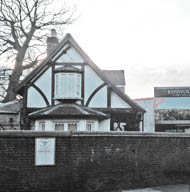
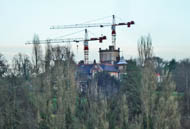
The construction site from Hampstead Heath.
| Harry Hallowes, a tramp who has lived in the grounds of Athlone House since 1986, recently won the rights to the deeds of his half-acre plot (reputedly worth £2m). Because local residents were concerned that the new development would dominate Hampstead Heath, Dwyer Investments agreed to donate a hectare of woodland (which included Mr Hallowes' plot) to the Corporation of London, who manage the Heath, to act as a buffer zone. |
References
www.british-towns.net
www.camden.gov.uk